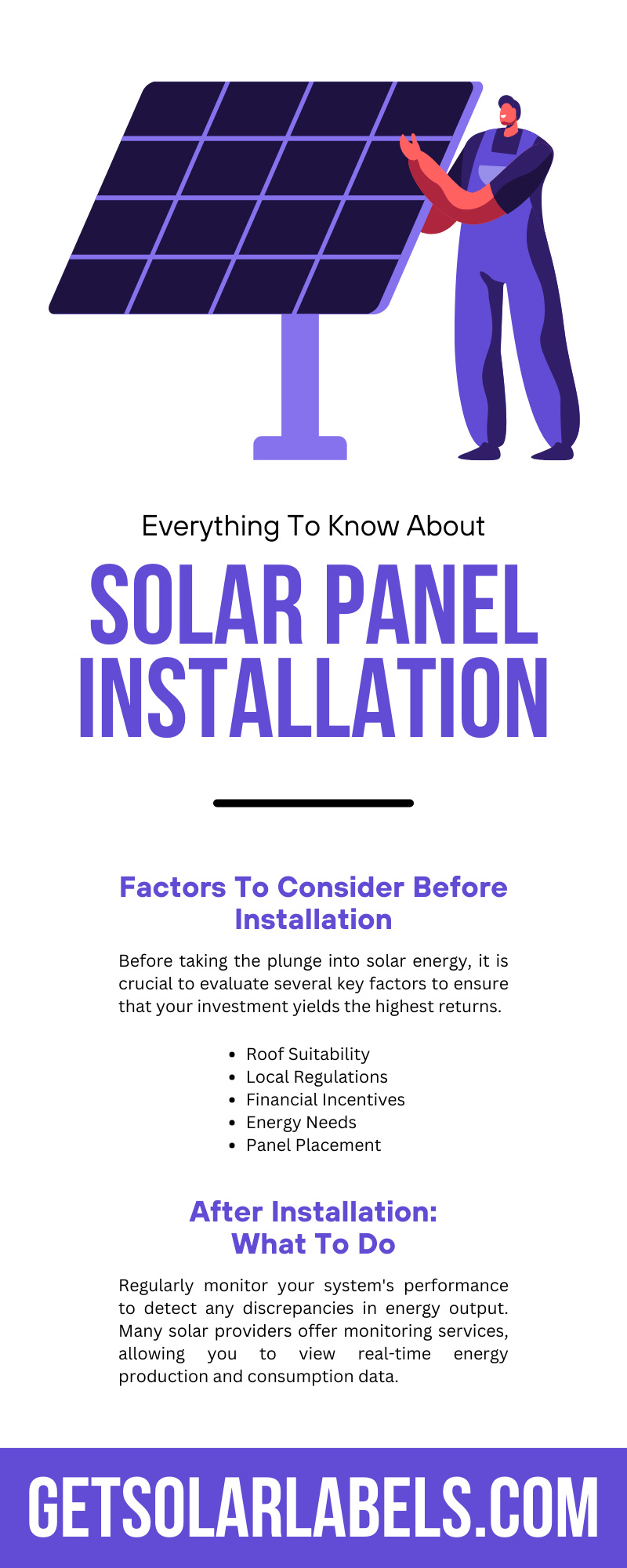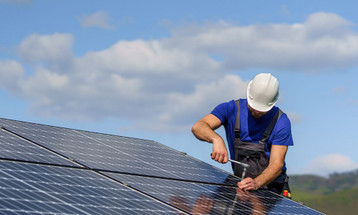Feb 21st 2024
Everything To Know About Solar Panel Installation
As the world tilts toward renewable energy, solar panel installation emerges as a beacon of progress. It's not just about joining a green revolution—it's about investing in our planet's future and your energy independence. If you're considering a solar photovoltaic (PV) system for your home or business, we'll walk you through everything to know about solar panel installation, from the beginning stages of planning to the final touches.
Benefits of Solar Panels
First, why should homeowners and commercial business owners consider solar PV systems at all?
Cost Savings
One of the most compelling arguments for adopting solar technology is the significant cost savings on electricity bills. Once you overcome the initial implementation costs, solar panels pay for themselves by slashing monthly energy expenses and even generating passive income through net metering, where you sell surplus energy back to the grid.
Environmental Impact
Solar energy is a clean, renewable resource that reduces carbon footprint and combats greenhouse gas emissions. By choosing solar panels, you help decrease the reliance on fossil fuels and contribute to a cleaner environment for generations.
Energy Independence
With a solar PV system, you're less beholden to the whims of energy companies. No more peak rates or worrying about rising energy costs. You have the power—quite literally—in your hands, offering a security that's both practical and incredibly satisfying.
Types of Solar Panels
Those unfamiliar with solar panel technology may not know there are different types of solar panels, each with unique advantages.
Monocrystalline
These panels, recognizable by their uniform dark color, are known for high efficiency and durability. They tend to be more expensive but are an excellent choice for those seeking performance and longevity.
Polycrystalline
Distinguished by a speckled blue hue, polycrystalline panels have a slightly lower efficiency and lifespan but are more affordable, making them a popular option for residential installations.
Thin-Film
These panels are versatile and lightweight, suitable for various surfaces. They typically have less efficiency than crystalline types, but their ease of installation and aesthetic appeal provide a unique advantage.
Factors To Consider Before Installation
Before taking the plunge into solar energy, it is crucial to evaluate several key factors to ensure that your investment yields the highest returns. From assessing your property's solar potential to understanding local regulations, preparing for solar system installation involves careful consideration across multiple areas. Below, we lay out fundamental aspects every homeowner or business should contemplate.
Roof Suitability
Not all roofs are created equal for solar panel installation. Consider the orientation, angle, shade, condition, and structural integrity to ensure maximum energy generation and safety. A professional assessment can determine if your roof is suitable for installation.
Local Regulations
Check with your local authorities for permits and regulations related to solar PV system installation. Some HOAs may outright ban solar systems in their community or place harsh restrictions. Reviewing all local regulations regarding solar panels in your area will ensure you don't face any fines or penalties during or after installation.
Financial Incentives
Many governments offer financial incentives and tax breaks to encourage solar adoption, making it a more cost-effective investment. Research and take advantage of these opportunities before beginning the installation process.
Energy Needs
Gauge your household's energy consumption to determine the size and number of needed panels. This will help tailor the installation to your specific power requirements and financial goals.
Panel Placement
Since solar panels rely on sunlight, the placement is crucial. Optimal positioning maximizes energy production and efficiency. Factors like shading and roof angle play a significant role in determining the best placement.
The Installation Process
Embarking on your solar PV system installation is pivotal to energy autonomy and ecological responsibility. This section elucidates the sequence of events from beginning to end, ensuring you clearly understand what lies ahead.
Site Assessment
Professional installers will assess your property to determine the best placement and type of solar system. This phase is vital to harness the sun's power effectively.
Permitting and Paperwork
The bureaucratic journey may be arduous, with permits, inspections, and applications needed from local governments and utility companies. Professionals typically handle this process, but it's good to stay informed.
Mounting the Panels
This is where things get real. Installers will securely fasten the solar panels to your roof, ensuring they are positioned to capture maximum sunlight.
Grid Integration and Net Metering
After the solar panels are securely in place and the electrical connections are established, integrating your new solar PV system with the utility grid is a pivotal step. This synchronization with the grid is not only technical—it paves the way for potential financial benefits through net metering.
Labeling and Final Inspection
Once everything is set up, the final step is to label all solar system components for safety and identification. A professional inspector will then ensure that the installation meets all regulations before you can officially start producing your clean energy!
After Installation: What To Do
Once your solar PV system is installed and connected to the grid, you must understand the steps you can take to ensure it operates at peak efficiency. Regularly monitor your system's performance to detect any discrepancies in energy output. Many solar providers offer monitoring services, allowing you to view real-time energy production and consumption data.
Schedule annual maintenance checks with a certified professional to inspect and clean your panels, ensuring they remain free from debris that can obstruct sunlight. Leverage the power of automation—consider investing in smart home energy management systems that optimize your solar panel usage and integrate seamlessly with your lifestyle.
Don't forget to adjust your energy habits; by shifting high-energy tasks to daylight hours, you capitalize on solar production, enhancing those cost savings. Lastly, stay informed about the latest advancements in solar technology to ensure your system remains state-of-the-art, fortifying your investment and commitment to a more sustainable future.
Prepare for Installation With Get Solar Labels
That's basically everything to know about solar panel installation, from what should be considered beforehand to the installation process to what solar system owners should do to maximize the efficiency and utility of their new panels after installation. At Get Solar Labels, we're familiar with every aspect of the solar panel installation process, particularly regarding labels and placards.
If you're an installer or a solar PV system owner who needs solar tags, we've got you covered. Our high-quality solar labels are designed to meet all regulatory requirements for solar panel safety and quality. Settle for nothing less than the best when you buy from Get Solar Labels.


